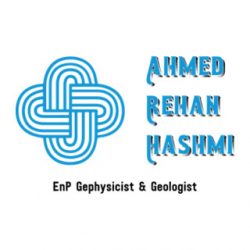Weather Modification
Weather modification is the act of intentionally manipulating or altering the weather. The most common form of weather modification is cloud seeding, which help to enhance rain or snow percentage, this is done usually to increase the water supply regionally.
Brief History of Weather Modification
Louis Gathmann in 1891 suggested shooting liquid carbon dioxide into rain clouds to cause them to rain. During 1930s the Bergeron-Findeisen process theorized that super cooled water droplets present while ice crystals are released into rain clouds would cause rain. While researching aircraft icing, General Electric (GE)’s Vincent Schaefer and Irving Langmuir confirmed the theory. Schaefer discovered the principle of cloud seeding in July 1946 through a series of serendipitous events. Following ideas generated between him and Nobel laureate Langmuir while climbing Mt Washington in New Hampshire, Schaefer, Langmuir’s research associate, created a way of experimenting with super cooled clouds using a deep freeze unit of potential agents to stimulate ice crystal growth, i.e., table salt, talcum powder, soils, dust, and various chemical agents with minor effect. Then one hot and humid July 14, 1946, he wanted to try a few experiments at GE’s Schenectady Research Lab.
Within the month, Schaefer’s colleague, the atmospheric scientist Dr. Bernard Vonnegut was credited with discovering another method for “seeding” super-cooled cloud water. Vonnegut accomplished his discovery at the desk, looking up information in a basic chemistry text and then tinkering with silver and iodide chemicals to produce silver iodide. Together with Professor Henry Chessin, SUNY Albany, a crystallographer, he co-authored a publication in Science and received a patent in 1975. Both methods were adopted for use in cloud seeding during 1946 while working for GE in the state of New York.
Cloud seeding flights started from November 13, 1946. Vincent J. Schaefer dropped about 1.5 Kg dry ice pellet from the light weight aircraft into the super cooled lenticular stratocumulus clouds near the Berkshire mountains of Western Massachusetts. Within in 5 minutes the clouds changed into snowflakes that subsequently penetrated about 600 meter into the dry air below the base before subliming completely away. With the spectacular achievement of these experiments the dream of controlling the weather seems to be come true within the grasp of mankind.
Cloud seeding
Cloud seeding is the branch of weather modification that aims to change or enhance the amount of rainfall /snowfall. The substances are dispersed into the atmosphere i.e. stratosphere or troposphere directly above the target of selected area. Nowadays it is widely used to suppress the fog and ease the hailstones during winter season.
- Substances used in cloud seeding: Silver Iodide, Potassium Iodide, Sodium Chloride ( Brine Solution), Dry Ice, Liquid Propane, Hygroscopic Materials.
- Source of Cloud seeding: Two Major sources widely used in cloud seeding, one is through Air Borne (Aircraft) and the other through rockets, canister, anti-aircraft guns & generators.
Importance of Cloud Seeding for Pakistan
- Pakistan is an agricultural country but many parts of Pakistan is facing draught condition. Pakistan is in need to enhance its water supply. To meet this shortcoming of water supply Cloud seeding played a vital role to fulfill the demand of water supply.
- The Northern areas of Pakistan has an excessive clouds that can be precipitated and in winters it is possible to enhance snowfall as well. By enhancement of water supply from northern areas and can be able to deliver sufficient amount of water supply through water channels, especially in those areas where Pakistan is facing severe drought condition.
- The underground water level of Punjab, Balochistan and Sindh are dropped to dangerous level. When Pakistan has excess amount of water then it automatically recharge our underground aquifers.
- Now a days Pakistan is facing a smog condition in different areas of Punjab and it is really affected the population health. Causing severe breathe related diseases and so on. Smog can be suppressed by dispersing cloud seeding substances into the atmosphere.








